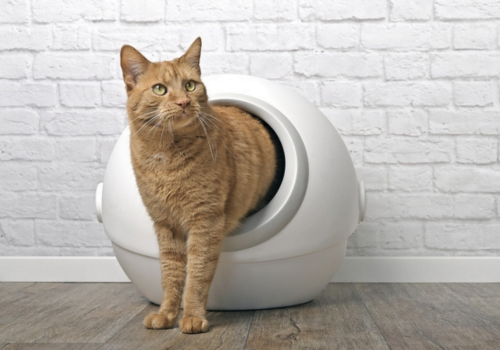Estimated reading time: 3 minutes
Pet owners, imagine this: It’s been a long day, and as you arrive home, your furry friend greets you with a purr, rubbing against your leg, demanding attention. But instead of a pleasant welcome, you’re met with a less than pleasant surprise – the stench of an overflowing litter box that needs immediate attention. Not the ideal way to unwind, right?
But, what if we told you that there’s a way to avoid this scenario, where you could come home to a clean litter box every day, without having to lift a finger? Sounds too good to be true? Welcome to the future of pet care: self-cleaning litter boxes. But the real question remains, “Do self-cleaning litter boxes really work?“
Let’s dive in and discover the truth behind this innovative invention that promises to revolutionize your cat’s toilet time.
What is a Self-Cleaning Litter Box?
A self-cleaning litter box, as the name suggests, is a litter box that cleans itself. In essence, it’s an automated, mechanical device designed to make the task of cleaning cat litter a breeze for pet owners.
How Do Self-Cleaning Litter Boxes Work?
The Basic Mechanism
These clever inventions primarily work by automatically separating waste from the clean litter. After your cat has done its business, sensors within the box activate the cleaning mechanism. The waste is then sifted and stored in a separate compartment for easy disposal.
Different Types of Self-Cleaning Litter Boxes
There are several types of self-cleaning litter boxes available in the market. Some use rake systems to separate waste, others rotate to sift the litter, and there are models that flush waste like a regular toilet.
The Advantages of Self-Cleaning Litter Boxes
Convenience
The main advantage of a self-cleaning litter box is convenience. It saves you from the daily chore of cleaning, giving you more time to bond with your pet.
Odor Reduction
Automated cleaning means that waste doesn’t sit in the box for long, reducing the overall odor.
Health Monitoring
Some advanced models can even track your cat’s litter box usage, helping monitor their health.
The Drawbacks of Self-Cleaning Litter Boxes
Cost
These devices are more expensive than traditional litter boxes. Also, they may require special types of litter or replacement parts, adding to the cost over time.
Maintenance
While they do reduce the frequency of cleaning, these devices still need regular maintenance and occasional deep cleaning.
Power Dependency
Most models are electrically powered. Thus, they could be useless during a power outage unless they have a backup battery.
Real User Experiences
Many users find self-cleaning litter boxes to be a game-changer, while others have had less positive experiences. The effectiveness seems to depend on the individual cat’s preferences and habits, as well as the specific model of the litter box.
Conclusion
Self-cleaning litter boxes do work, but they’re not a perfect solution for everyone. They offer several advantages such as convenience and odor reduction, but also have drawbacks like cost and maintenance. It’s essential to consider your individual needs and circumstances before making a decision.
As an Amazon Associate I earn from qualifying purchases.








